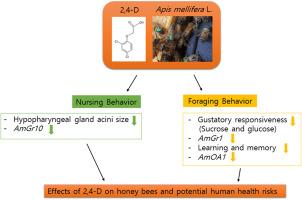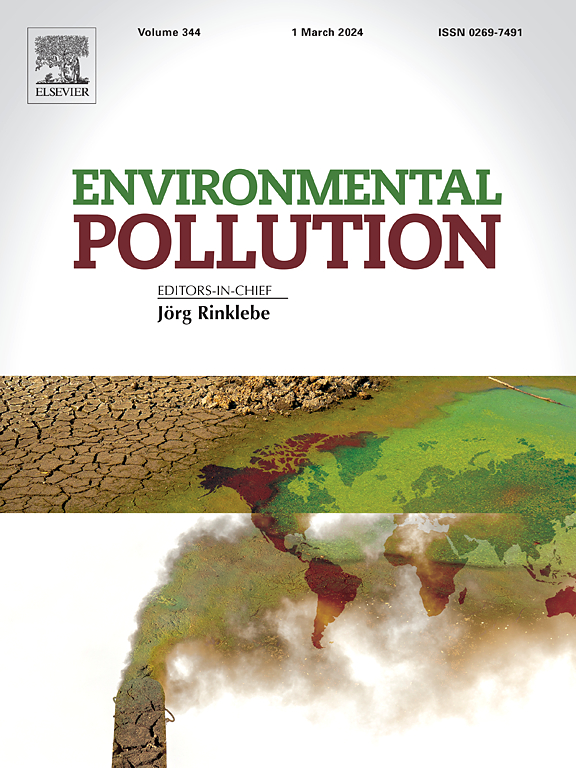Sub-lethal Exposure to 2,4-Dichlorophenoxyacetic Acid Disrupts Nursing and Foraging Behaviors in Honey Bees
IF 7.6
2区 环境科学与生态学
Q1 ENVIRONMENTAL SCIENCES
引用次数: 0
Abstract
A popular herbicide from the chlorophenoxy group, 2,4-Dichlorophenoxyacetic acid (2,4-D) effectively controls broadleaf weeds in agricultural environments. However, its application threatens honey bee habitats and has been implicated in colony collapse disorder (CCD) due to its toxic effects. While the general hazards of 2,4-D to honey bees are recognized, its specific impact on nursing and foraging behaviors remains poorly understood. This study quantified the lethal dose (LD50) of 2,4-D for honey bees across developmental stages, finding LD50 values of 104.1 μg/bee for newly emerged bees, 456.6 μg/bee for nurse bees, and 221.6 μg/bee for foragers. We further investigated sub-lethal effects on nursing and foraging, observing that exposure led to significant reductions in hypopharyngeal gland (HG) acini size, essential for brood care, and decreased expression of AmGr10, an amino acid receptor gene linked to nursing behavior. For foragers, sub-lethal 2,4-D exposure impaired gustatory responsiveness to key feeding stimuli, such as sucrose and glucose. This impairment corresponded with a decrease in AmGr1 expression, a taste receptor gene critical for resource detection. Additionally, affected foragers showed reduced olfactory learning and memory, likely due to decreased expression of the octopamine receptor AmOA1, essential for associative learning processes. These findings provide compelling evidence that sub-lethal abdominal exposure to 2,4-D disrupts both nursing and foraging behaviors by impairing physiological and cognitive functions, ultimately jeopardizing colony health and resilience.

求助全文
约1分钟内获得全文
求助全文
来源期刊

Environmental Pollution
环境科学-环境科学
CiteScore
16.00
自引率
6.70%
发文量
2082
审稿时长
2.9 months
期刊介绍:
Environmental Pollution is an international peer-reviewed journal that publishes high-quality research papers and review articles covering all aspects of environmental pollution and its impacts on ecosystems and human health.
Subject areas include, but are not limited to:
• Sources and occurrences of pollutants that are clearly defined and measured in environmental compartments, food and food-related items, and human bodies;
• Interlinks between contaminant exposure and biological, ecological, and human health effects, including those of climate change;
• Contaminants of emerging concerns (including but not limited to antibiotic resistant microorganisms or genes, microplastics/nanoplastics, electronic wastes, light, and noise) and/or their biological, ecological, or human health effects;
• Laboratory and field studies on the remediation/mitigation of environmental pollution via new techniques and with clear links to biological, ecological, or human health effects;
• Modeling of pollution processes, patterns, or trends that is of clear environmental and/or human health interest;
• New techniques that measure and examine environmental occurrences, transport, behavior, and effects of pollutants within the environment or the laboratory, provided that they can be clearly used to address problems within regional or global environmental compartments.
 求助内容:
求助内容: 应助结果提醒方式:
应助结果提醒方式:


